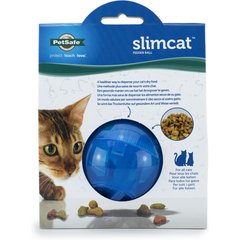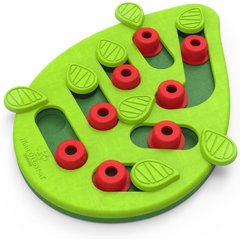Why Are Cats Such Picky Eaters?
Almost every cat parent has experienced the frustration of their feline refusing perfectly good food. Sometimes this happens after the cat has been on the same food for months or years, and the refusal to eat appears suddenly. Other times, the cat may refuse to eat a new food.
Cats can be picky eaters due to their natural instincts surrounding food and eating behaviors, but it’s important to pay attention to changes in your kitty’s desire to eat food. Cats that usually have good appetites and suddenly stop eating (or begin eating more) may need to be seen by a veterinarian.
Why Cats Are Finicky Eaters
There are several reasons your cat might be a picky eater.
Natural Instincts
Picky eating is often related to how a cat’s wild ancestors hunted and consumed prey. Wild cats typically subsist on small, frequent meals of smaller mammals caught during dawn and dusk. As such, your cat may prefer to eat multiple small meals throughout the day.
Fresh prey is usually warm when consumed. As such, your cat may also prefer her food warmed up, whether that’s wet food heated to body temperature (about 100 degrees Fahrenheit) or dry food moistened with a bit of warm water. Cats may even prefer a specific shape of wet food or dry kibble that emulates the look and feel of fresh prey.
Learned Preference
Kittens learn from their mother which solid foods are safe and preferable. The mother cat’s diet while pregnant can influence the types of foods her kittens will prefer as they mature.
Because of this, it’s important to introduce young kittens to foods with different flavors, textures, sizes, shapes, and consistencies to help them be more accepting of a variety of foods as adults. This can be helpful if they need to be on a particular diet later in life for health reasons.
Similarly, cats that were eating a particular food during an illness or a time of stress, such as a hospital stay, may avoid that food in the future because of negative associations.
Location
Cats eat best in low-stress environments that meet their need for cleanliness. For example, cats will usually not eat well if:
-
Their food is placed near a litter box
-
Their bowl is in a high-traffic area of the home
-
There are other animals around when they are eating
-
Their food is stale, rancid, or in a dirty container
Some cats will even refuse to eat much if their food bowl is near their water bowl. Cats may also not eat well after moving to a new residence or if their bowl was relocated to a different area of their home.
Medical Issues
Sometimes picky eating can be related to a health issue.
Cats with dental disease may have mouth pain that prevents them from wanting to pick up and crush kibble with their teeth. Cats with kidney disease may experience nausea that decreases their appetite. Arthritis pain in older cats may make them less willing to get up to eat. Cats with nasal congestion may have a lower desire to eat because they may not smell their food as well, and the aroma of food can be important for stimulating appetite.
How To Get a Picky Cat To Eat
If your cat is turning her nose up at her food, trying one of these methods might help her eat better.
Offer Different Flavors
One of the first things you can try if you have a picky cat is alternating flavors of the food they eat. For instance, if your cat has been eating mostly beef, try fish or chicken.
A great example is the Tiki Cat® After Dark Variety Pack canned cat food, which comes in five flavors: chicken; chicken and quail egg; chicken and duck; chicken and lamb; and chicken and beef. Rotating these flavors can keep your cat interested in her meals.
Try Different Textures and Shapes
If your cat eats wet food, she may prefer some textures over others. If she’s been eating mostly pâté, for example, she may be more interested in stews, morsels, or strips.
If your cat eats dry food, she may prefer different sizes and shapes of kibble, such as round, oblong, triangle, or X-shaped. Purina® Cat Chow features different kibble shapes in each bag that may be enticing to your cat. If your cat has been exclusively on dry food, offer some wet food, or vice versa.
Adjust the Temperature
One trick that may help a picky cat is experimenting with the food’s temperature. Some cats may prefer their food warm, while others may prefer room-temperature food or even food chilled in the refrigerator. You can also add warm water to dry kibble to see if that will tempt your kitty to eat.
Add Food Toppers
Food toppers like Tiki Cat® Broths or Purina® Beyond® Mixers, combined with wet food or kibble, can also serve as useful tools for enticing picky cats. These broths can be placed on the food either as-is or warmed up to increase the aroma.
Interactive Eating
Some cats may be more interested in eating if they are able to practice their instinctive hunting behaviors and work for their food. Treat-dispensing toys or puzzle toys can be great ways to feed your cat part of her daily calories while also stimulating her mind.
Change Up the Eating Schedule
If your cat has been on a strict eating schedule, such as one morning and one evening meal, and has become picky about her food, it may help to change her routine. Some cats prefer to eat multiple smaller meals throughout the day instead of larger meals fed several hours apart. By contrast, some cats may do better with timed meals if they are used to free feeding.
Try Stress-Relief Techniques
Stress may also affect your cat’s willingness to eat her meals. Trying a calming pheromone such as Feliway® Calming Diffuser or a stress-reducing probiotic powder like Purina® Calming Care. These may increase feelings of relaxation and help your cat eat better.
In addition, creating an ideal eating space for your cat can help her feel more comfortable during her meals so she eats properly. This can include placing her food bowl in a quiet area and restricting access from other animals when she is eating.
If Your Cat Is Suddenly a Picky Eater
If your cat has suddenly become a picky eater, most of the time there’s a medical reason. This can include kidney disease, gastrointestinal issues, dental disease, limb pain, respiratory infections, and heart disease.
Seek veterinary attention when your cat’s appetite suddenly decreases. Do not allow your cat to go more than 24–36 hours without eating. Cats can develop potentially life-threatening fat deposits in their livers if they don’t eat regularly, so making an urgent veterinary appointment is crucial if you see any changes in your cat’s appetite.
Featured Image: Chalabala/iStock / Getty Images Plus via Getty Images
References
“Feeding Your Cat,” Cornell Feline Health Center. Updated July 2017.
Brister, J. “Feeding Cats,” Veterinary Partner. Revised March 2023.


